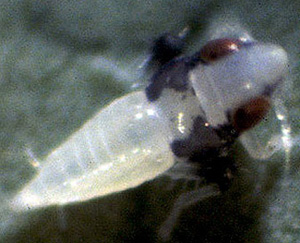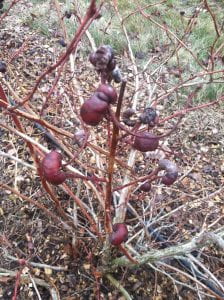Leaves may be deformed.
Causes include
Herbicide injury
Herbicide injury by Roundup herbicide may cause abnormal or stunted growth. See also Leaf injury caused by herbicides. More herbicide damage information

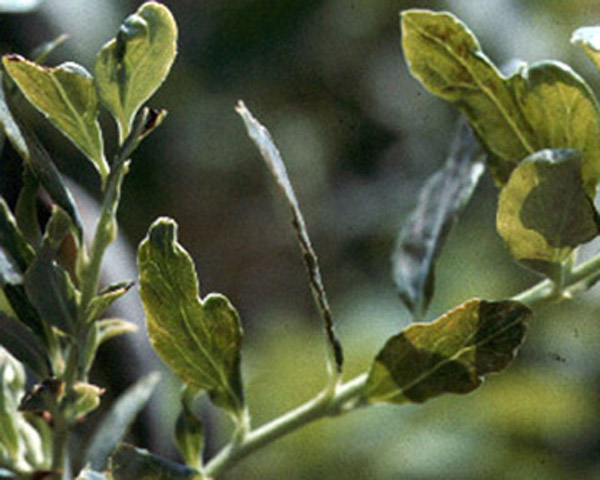
Witches’ broom
The rust fungus Pucciniastrum goeppertianum causes unusual growth called witches’ broom. The alternate host for this fungus is white fir.
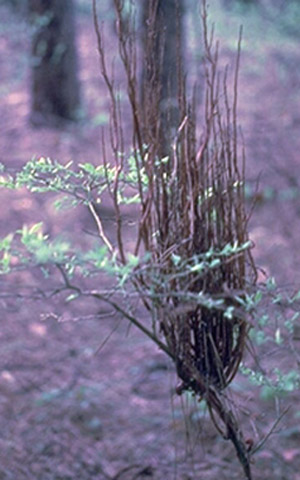
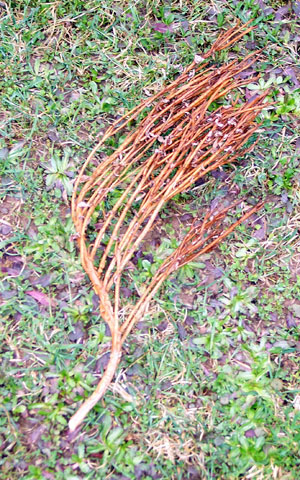
Blueberry stem gall wasp
Blueberry stem gall wasp (Hemadas nubilipennis) cause swellings (galls) on canes at egg deposition.
Swellings first appear greenish to red in color. Older galls appear gray and corky and often have exit holes.
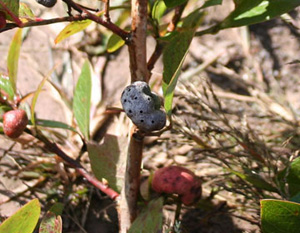
Larvae overwinter in galls then emerge as adults in spring.
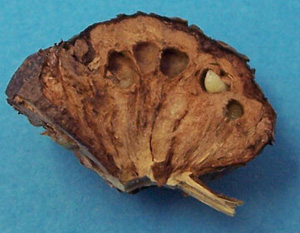
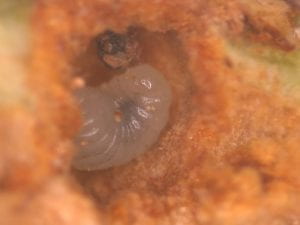
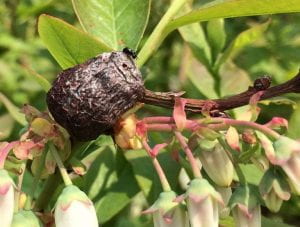
Crown gall
Infection by the crown gall, bacterium Agrobacterium tumefaciens, results in abnormal swelling of canes and stems.
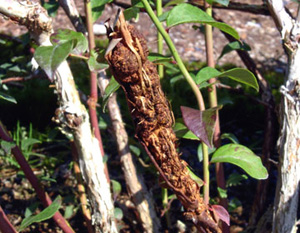
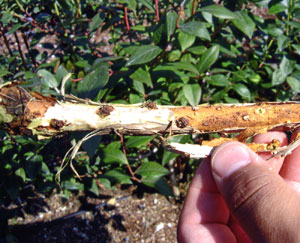
Blueberry Stunt
Severe stunting could be caused by a mycoplasma called blueberry stunt. Leaves are small and tend to be cupped downwards.
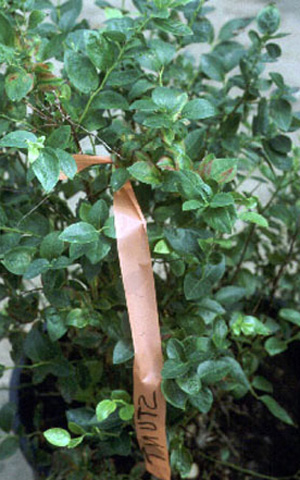
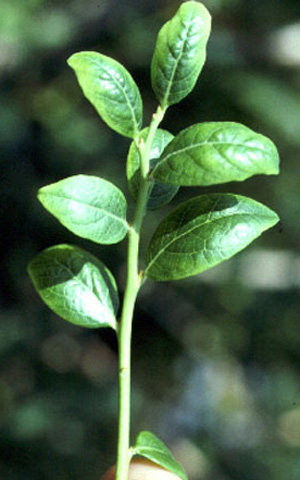
The organism is transmitted by the sharp-nosed leafhopper (Scaphytopius magdalensis).
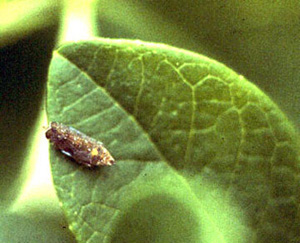
Leafhoppers must be managed to minimize the spread of stunt.
